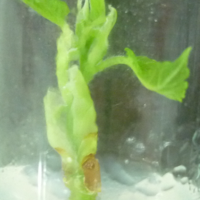Hairy root culture of white mulberry (Morus alba L.) for a source of tyrosinase inhibitors

Submitted: October 8, 2019
Accepted: February 18, 2020
Published: July 1, 2020
Accepted: February 18, 2020
Abstract Views: 956
PDF: 500
Publisher's note
All claims expressed in this article are solely those of the authors and do not necessarily represent those of their affiliated organizations, or those of the publisher, the editors and the reviewers. Any product that may be evaluated in this article or claim that may be made by its manufacturer is not guaranteed or endorsed by the publisher.
All claims expressed in this article are solely those of the authors and do not necessarily represent those of their affiliated organizations, or those of the publisher, the editors and the reviewers. Any product that may be evaluated in this article or claim that may be made by its manufacturer is not guaranteed or endorsed by the publisher.

 https://doi.org/10.4081/jbr.2020.8611
https://doi.org/10.4081/jbr.2020.8611



